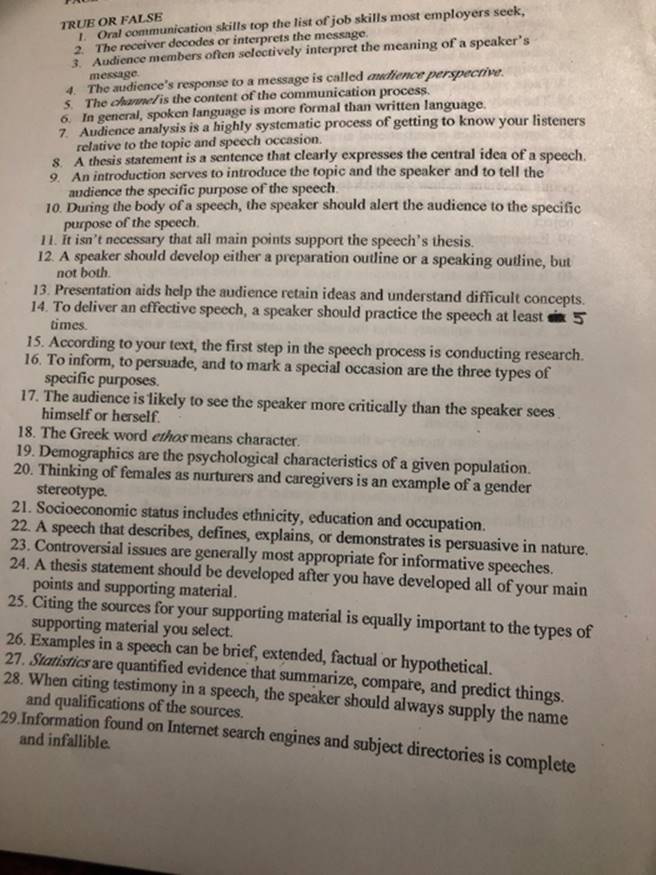Answered step by step
Verified Expert Solution
Question
1 Approved Answer
TRUE OR FALSE 1. Oral communication skills top the list of job skills most employers seek, 2. The receiver decodes or interprets the message.

TRUE OR FALSE 1. Oral communication skills top the list of job skills most employers seek, 2. The receiver decodes or interprets the message. 3. Audience members often selectively interpret the meaning of a speaker's message. 4. The audience's response to a message is called audience perspective. 5. The channel is the content of the communication process. 6. In general, spoken language is more formal than written language. 7. Audience analysis is a highly systematic process of getting to know your listeners relative to the topic and speech occasion. 8. A thesis statement is a sentence that clearly expresses the central idea of a speech. 9. An introduction serves to introduce the topic and the speaker and to tell the audience the specific purpose of the speech. 10. During the body of a speech, the speaker should alert the audience to the specific purpose of the speech. 11. It isn't necessary that all main points support the speech's thesis. 12. A speaker should develop either a preparation outline or a speaking outline, but not both. 13. Presentation aids help the audience retain ideas and understand difficult concepts. 14. To deliver an effective speech, a speaker should practice the speech at least 5 times. 15. According to your text, the first step in the speech process is conducting research. 16. To inform, to persuade, and to mark a special occasion are the three types of specific purposes. 17. The audience is likely to see the speaker more critically than the speaker sees himself or herself. 18. The Greek word ethos means character. 19. Demographics are the psychological characteristics of a given population. 20. Thinking of females as nurturers and caregivers is an example of a gender stereotype. 21. Socioeconomic status includes ethnicity, education and occupation. 22. A speech that describes, defines, explains, or demonstrates is persuasive in nature. 23. Controversial issues are generally most appropriate for informative speeches. 24. A thesis statement should be developed after you have developed all of your main points and supporting material. 25. Citing the sources for your supporting material is equally important to the types of supporting material you select. 26. Examples a speech can be brief, extended, factual or hypothetical. 27. Statistics are quantified evidence that summarize, compare, and predict things. 28. When citing testimony in a speech, the speaker should always supply the name and qualifications of the sources. 29. Information found on Internet search engines and subject directories is complete and infallible.
Step by Step Solution
★★★★★
3.50 Rating (167 Votes )
There are 3 Steps involved in it
Step: 1
The detailed answer for the above question is provided below ANSWER 1 TRUE Oral communication skills are highly valued by employers according to various studies and surveys 2 TRUE The receiver or the ...
Get Instant Access to Expert-Tailored Solutions
See step-by-step solutions with expert insights and AI powered tools for academic success
Step: 2

Step: 3

Ace Your Homework with AI
Get the answers you need in no time with our AI-driven, step-by-step assistance
Get Started


